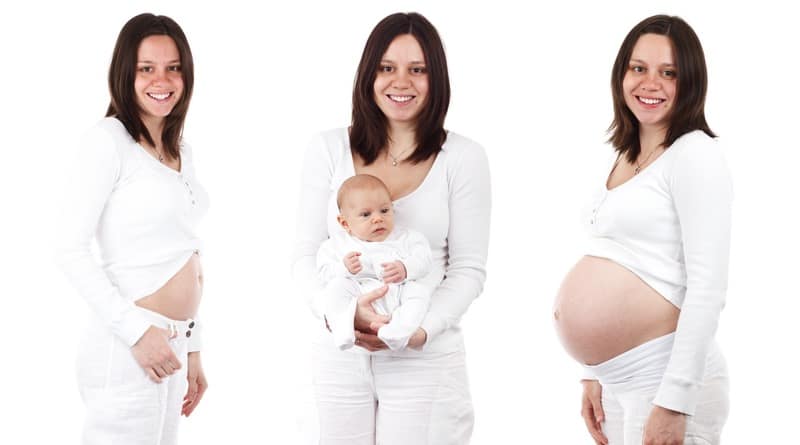Just Once More: Explore Your Secondary Infertility Options

We’ve all heard the stories: the one about the couple who conceived naturally right after finding out their adoption had gone through. The family who tried IVF three times before getting pregnant unassisted—and ending up with twins. These miracles are joyful occasions for those lucky families, but for families facing secondary infertility while trying to add a longed-for sibling, these stories may sting a bit. Well-meaning friends and family may say ‘as soon as you stop trying, that’s when it will happen,’ but it doesn’t work out that way for everyone. Some families may need a little more help getting pregnant, even if the first time was a cinch.
That’s why more and more families are turning to egg banks, such as Donor Egg Bank, for help.
What is secondary infertility?
Secondary infertility describes the condition of being unable to conceive after previously carrying a child to term. You can check your fertility levels here.
How common is it?
Secondary infertility accounts for an estimated 60 percent of infertility cases, making it far more common than many people realize. A primary reason for secondary infertility is simply getting older—as women age, their eggs do, too. Older eggs may develop abnormalities that make it harder to get and stay pregnant.
What are the emotional effects?
Many couples are blindsided by secondary infertility, especially if getting pregnant the first time was easy. They may be reeling from feelings of betrayal by their bodies and confused by new medical diagnoses, all while trying to hide their sadness so as not to worry their existing child unduly. While friends and family are often compassionate about the hardships of infertility the first time around, there’s a perception that as long as they have one child, the parents should feel blessed enough and shouldn’t worry about secondary infertility. But even though their first child means the world to them, there’s still a gaping hole in their hearts longing to be filled with the pitter-patter of another baby’s feet.
How can egg donation help?
When other treatment options have failed or if recommended by their fertility specialist, couples can turn to donor eggs to conceive that much-wanted child. While using a donor egg may mean the mother gives up the genetic link to her child, the father can contribute sperm, allowing for him to pass down familial traits. Donor eggs also allow the prospective mother to carry her baby and experience his or her growth during the pregnancy.
Become an Egg Donor
What are the steps in choosing an egg donor?
First, couples decide if they prefer to procure fresh eggs from a local donor, such as a friend or family member, or frozen eggs from an egg bank.
With fresh donor eggs, the couple must find a willing donor, ensure that she has been screened medically, psychologically and genetically, and begin the egg retrieval process. This means that the donor must take medicines to mature many eggs all at once. Simultaneously, the donor and the prospective mother take hormones that sync their menstrual cycles. Once the eggs have matured, the donor takes another medicine to release her eggs, at which point the doctor retrieves them. This process can take upwards of six months once all those steps are taken into account.
With frozen donor eggs, all of these steps have been completed in advance. Couples can browse egg donors who have passed through the highly selective screening process and whose eggs have already been retrieved. The only thing left is to select the right donor. Qualities such as education, personal interests, and appearance are among the criteria that couples use to make their decision. Once the donor is selected, the donor eggs can be shipped to the couple’s fertility clinic at a time that works with their schedule. Including fertilization and transfer, this process can take as little as four weeks to complete—a huge time-savings for couples who have already waited so long.
How are the eggs implanted?
When the recipient is ready to begin her cycle, the eggs will be thawed and fertilized. The lab allows the resulting embryos to culture for a few days. One or two of the healthiest, strongest embryos go on to be implanted into the recipient mother, who takes medication beforehand to make her uterus receptive to the incoming treasure in hopes of a successful transfer. This procedure is identical to standard in-vitro fertilization.
Then what?
If all goes well, it will be time to stock up on prenatal vitamins, unearth baby clothes from storage and plan a gender-reveal party that will become a social media sensation. After all, pressing older siblings’ hands to your belly to feel baby kicks—and witnessing your family become complete—is cause for celebration.
What's Your Reaction?
Newly middle-aged wife of 1, Mom of 3, Grandma of 2. A professional blogger who has lived in 3 places since losing her home to a house fire in October 2018 with her husband. Becky appreciates being self-employed which has allowed her to work from 'anywhere'. Life is better when you can laugh. As you can tell by her Facebook page where she keeps the humor memes going daily. Becky looks forward to the upcoming new year. It will be fun to see what 2020 holds.






